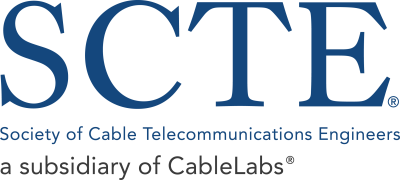 The September 2021 issue of the SCTE Technical Journal, published by the Society of Cable Telecommunications Engineers (SCTE), contains the article “Best Practices for the Use of AI/ML in the Mitigation of Video Piracy,” an operational practices document.
The September 2021 issue of the SCTE Technical Journal, published by the Society of Cable Telecommunications Engineers (SCTE), contains the article “Best Practices for the Use of AI/ML in the Mitigation of Video Piracy,” an operational practices document.
The document contains best practices in the use of artificial intelligence (AI) and machine learning (ML) toward the reduction of video piracy by consumers. Use cases include fraud detection, credential stuffing, identification of servers hosting illegally sourced content, and identification of pirated streams.
The paper was co-authored by Matthew Tooley, Vice President of Broadband Technology for NCTA, Steve Hawley, Founder and Managing Director of Piracy Monitor, and Kei Foo, Director of Advanced Video Engineering, Charter Communications. They are members of the AI/ML Working Group within SCTE’s Data Standards Subcommittee.
In addition to the piracy document, the September issue explores the following topics:
- Distributed Disaggregated Chassis networks, including technical and business impacts and physical placement and power consumption advantages.
- Electric load sensing, forecasting and how sharing can open up new markets for the industry.
- Digital advertising and video metadata
- How Wi-Fi Alliance Easy Connect can streamline onboarding for Open Connectivity Foundation IoT specification devices.
- The business case and the market landscape for cable operators in the telehealth sector.
Download the SCTE Journal (Volume 1, Number 2, September 2021). The Piracy paper begins on Page 31.
Review of concepts (excerpted from the best practices paper)
This is a report on best practices in the use of artificial intelligence (AI) and machine learning (ML) for the reduction of video piracy by consumers. A best practice is a method or technique that has been generally accepted as superior to any alternatives as it produces results that are superior to those achieved by other means.
AI is the broader concept of machines being able to carry out tasks in a way that would be considered ‘smart’. ML is a subset of AI-based on the concept of getting AI to accomplish tasks without being given specific instructions. In other words, it is about teaching machines how to learn. There are a few distinct ways that machines can learn – supervised learning, unsupervised learning, and reinforcement learning.
Machine learning is a subset of artificial intelligence. Machine learning algorithms build a model based upon training data to make predictions without being explicitly programmed to do so. Machine learning approaches or methods fall into three categories – 1) supervised machine learning, 2) unsupervised machine learning, and 3) semi-supervised machine learning.
Why it matters
This report focuses on supervised machine learning as supervised machine lends itself to classifying data and making decisions. Supervised machine learning trains itself on a labeled data set. The training data is labeled with information that the machine learning algorithm uses to build the machine learning model. The labels used by the algorithm to teach the model how to classify data. For example, an anti-video piracy model might be trained on a data set that has data sets that are labeled as pirated video or unauthorized use of a copy and benign video.












